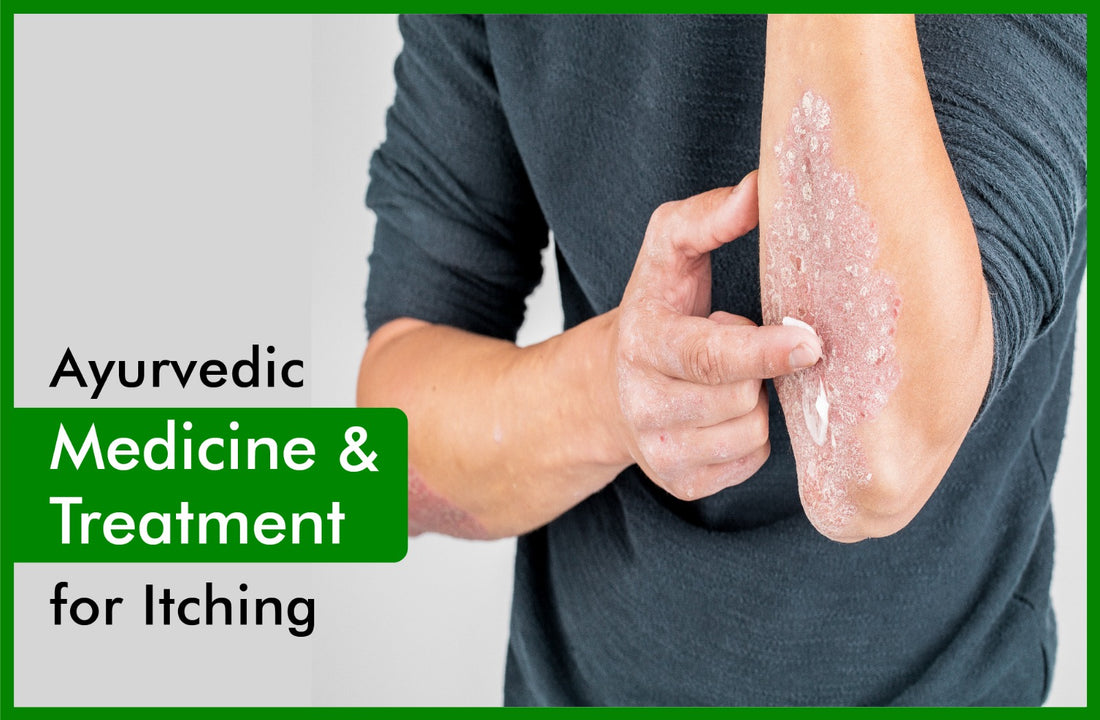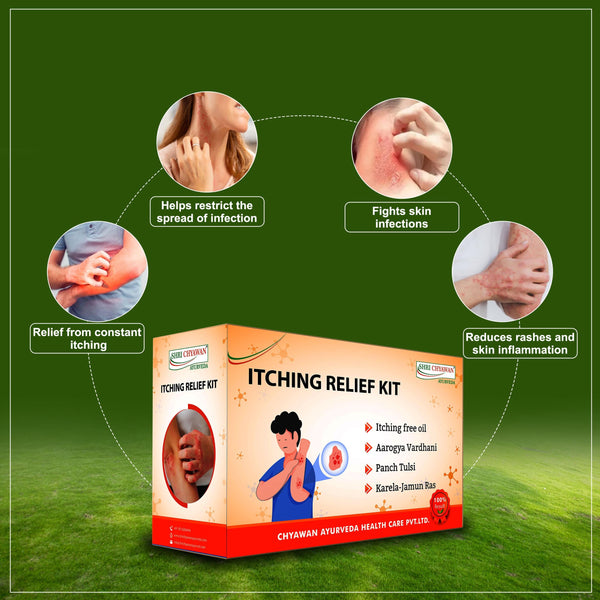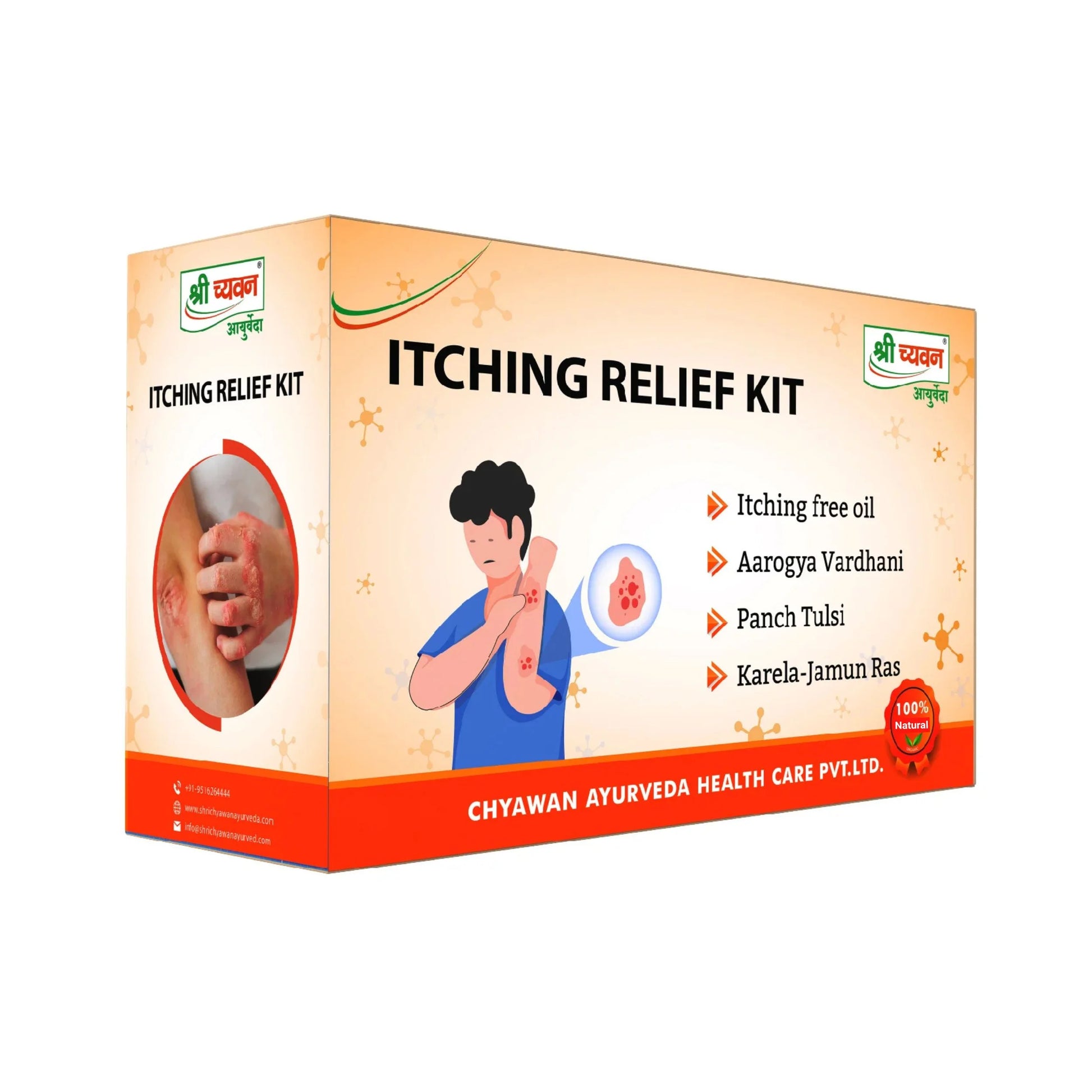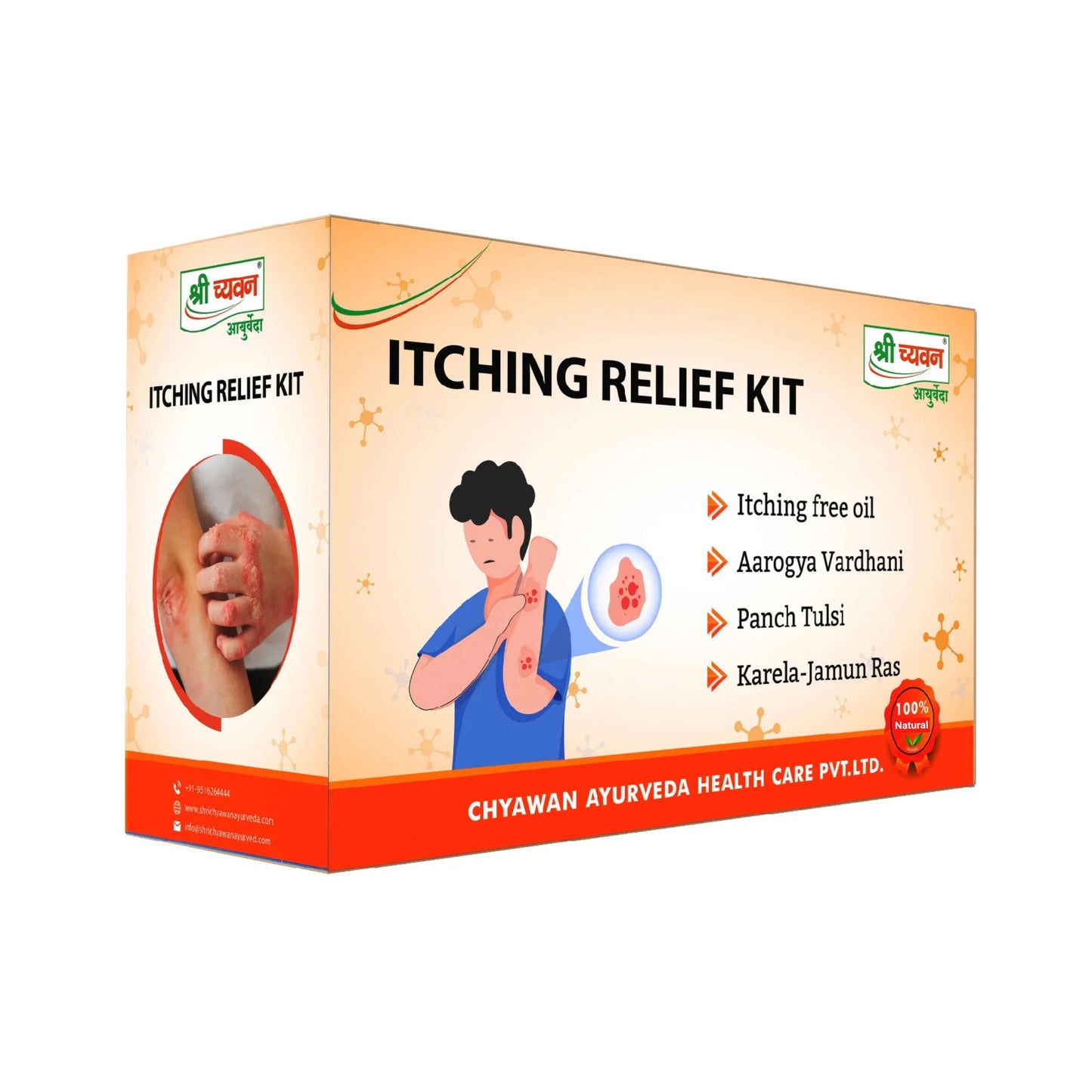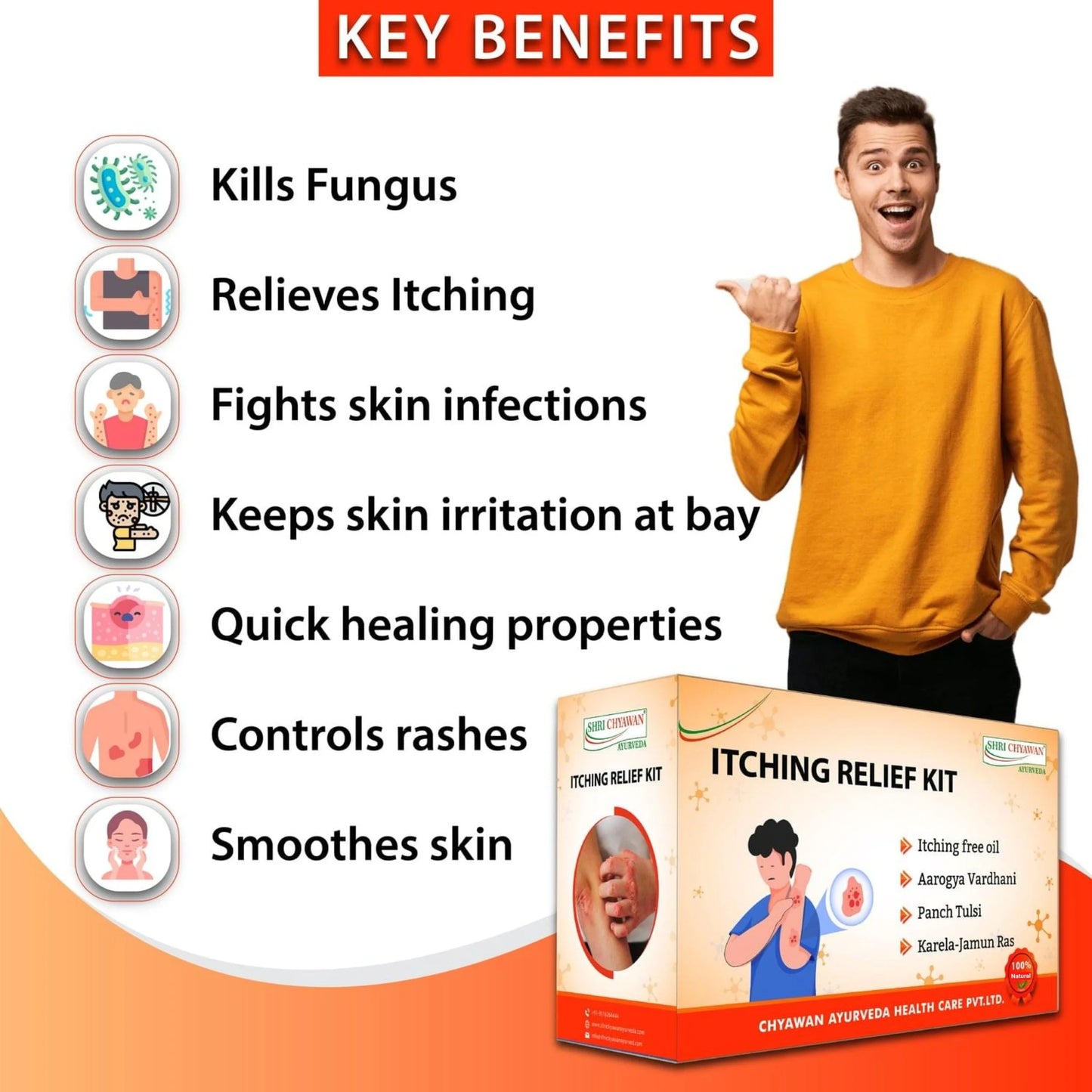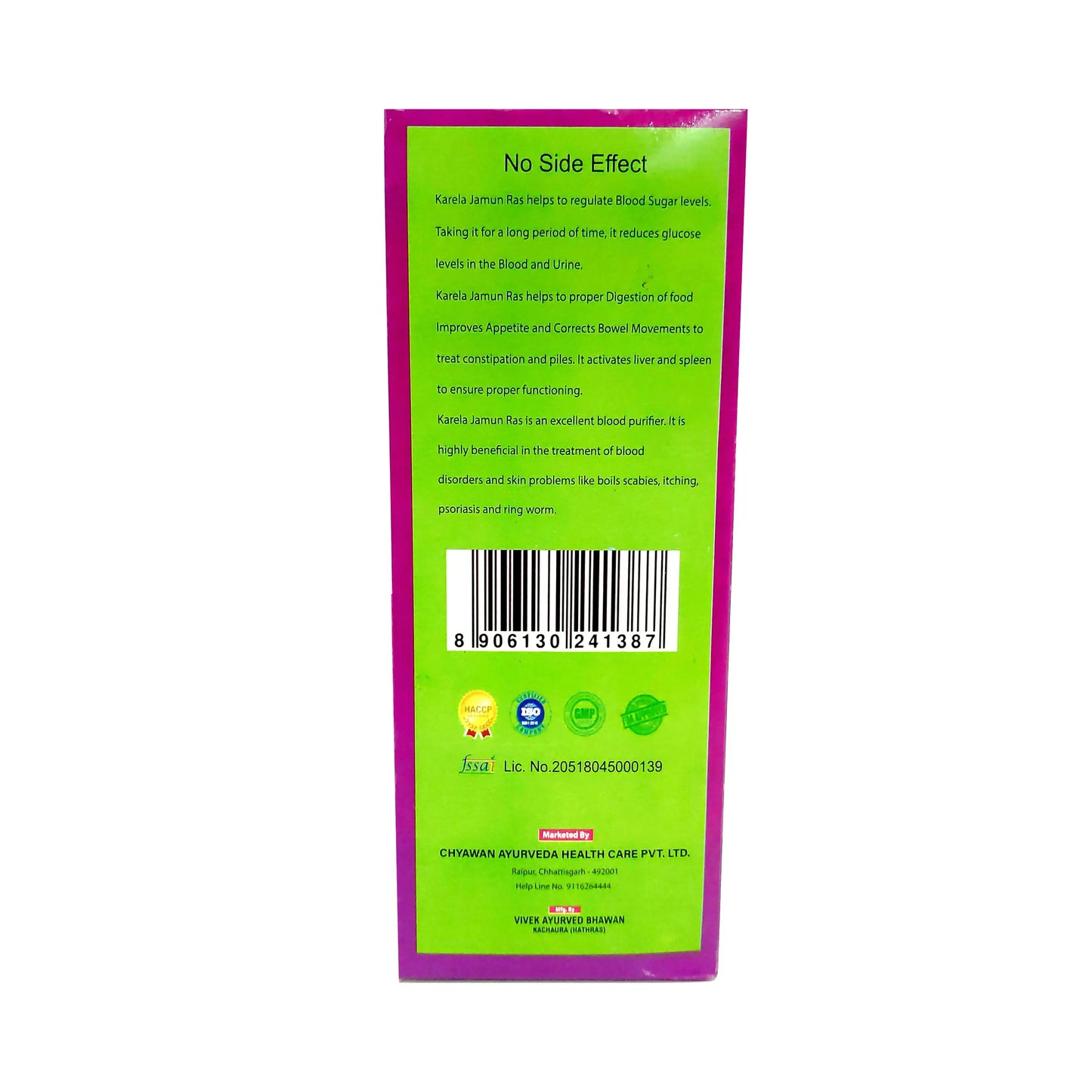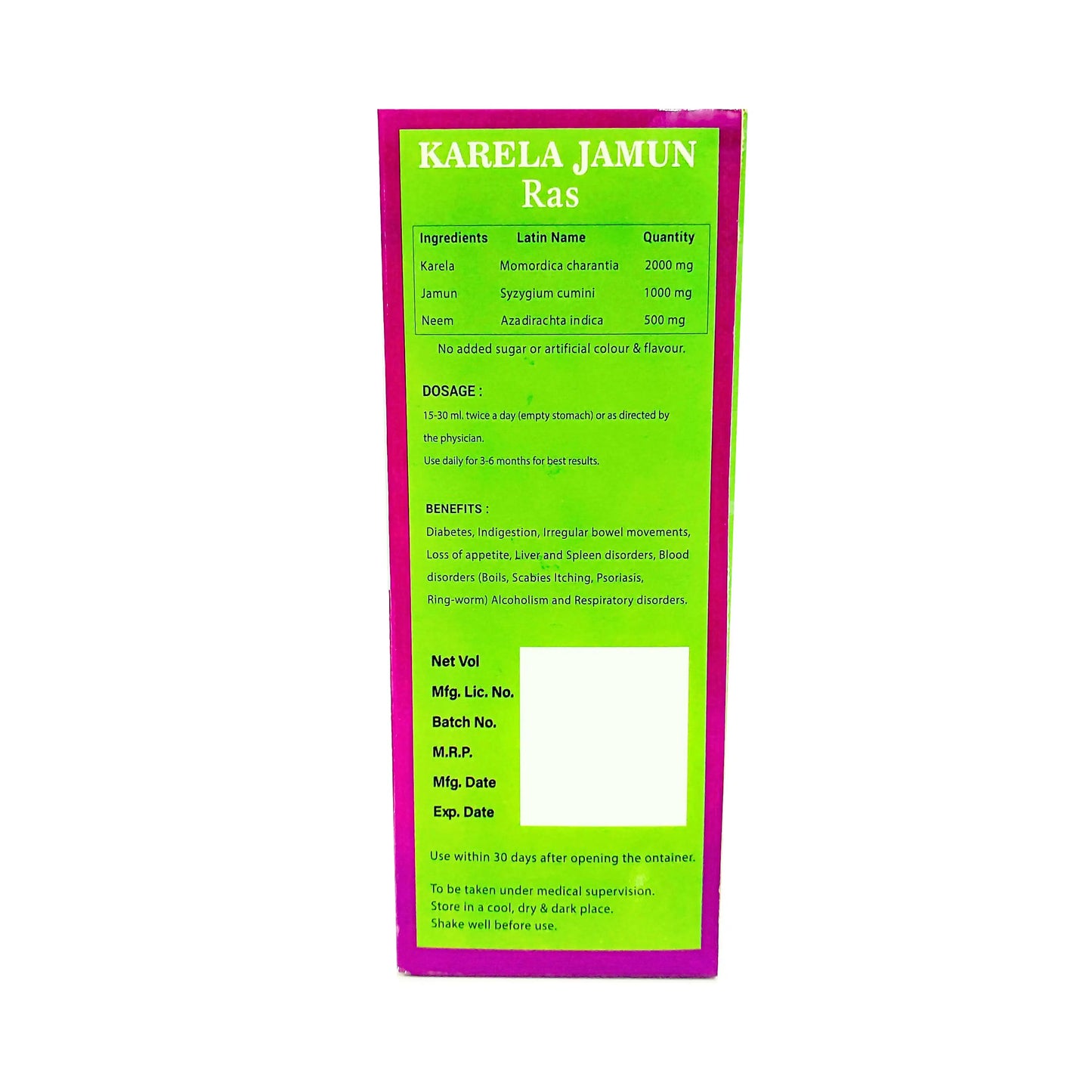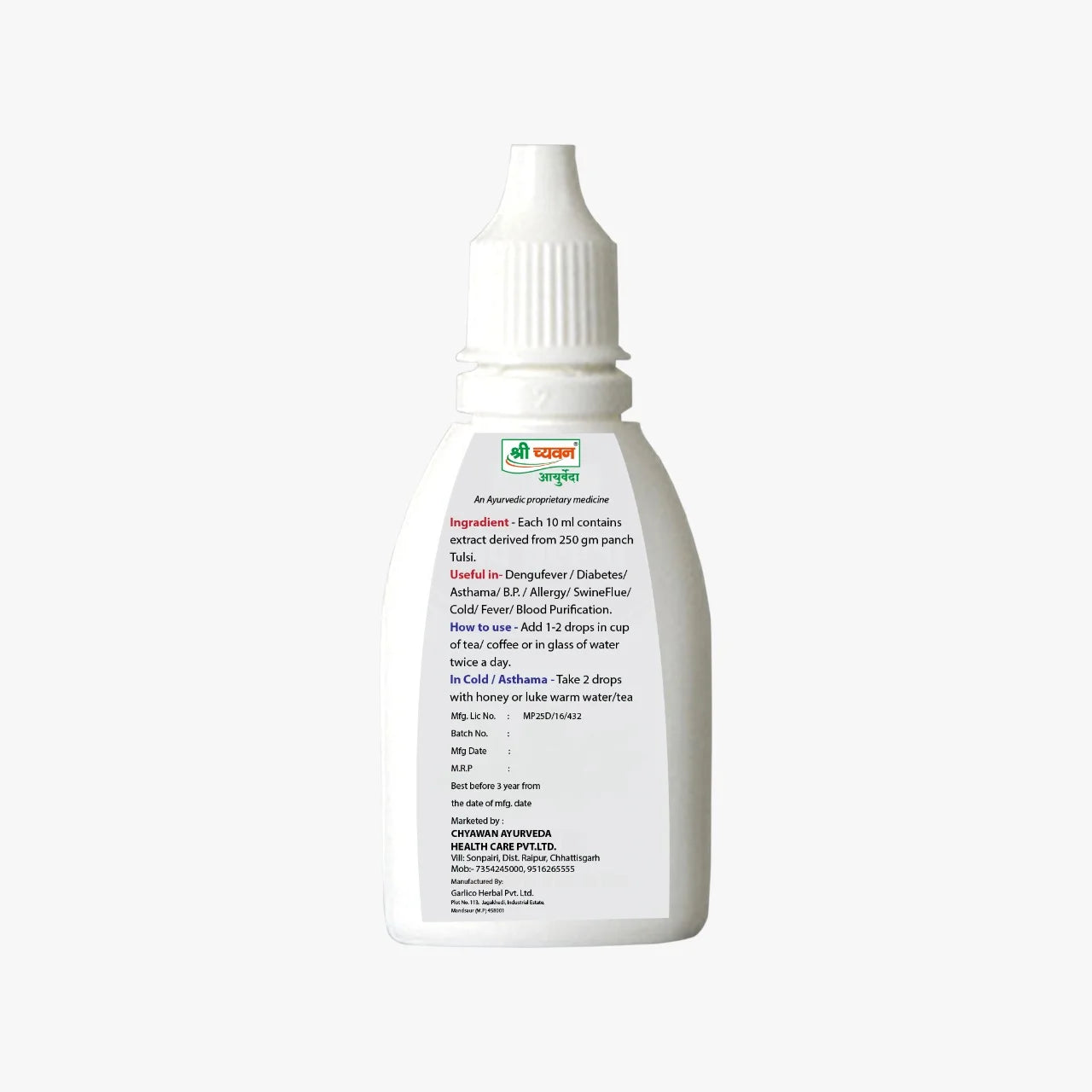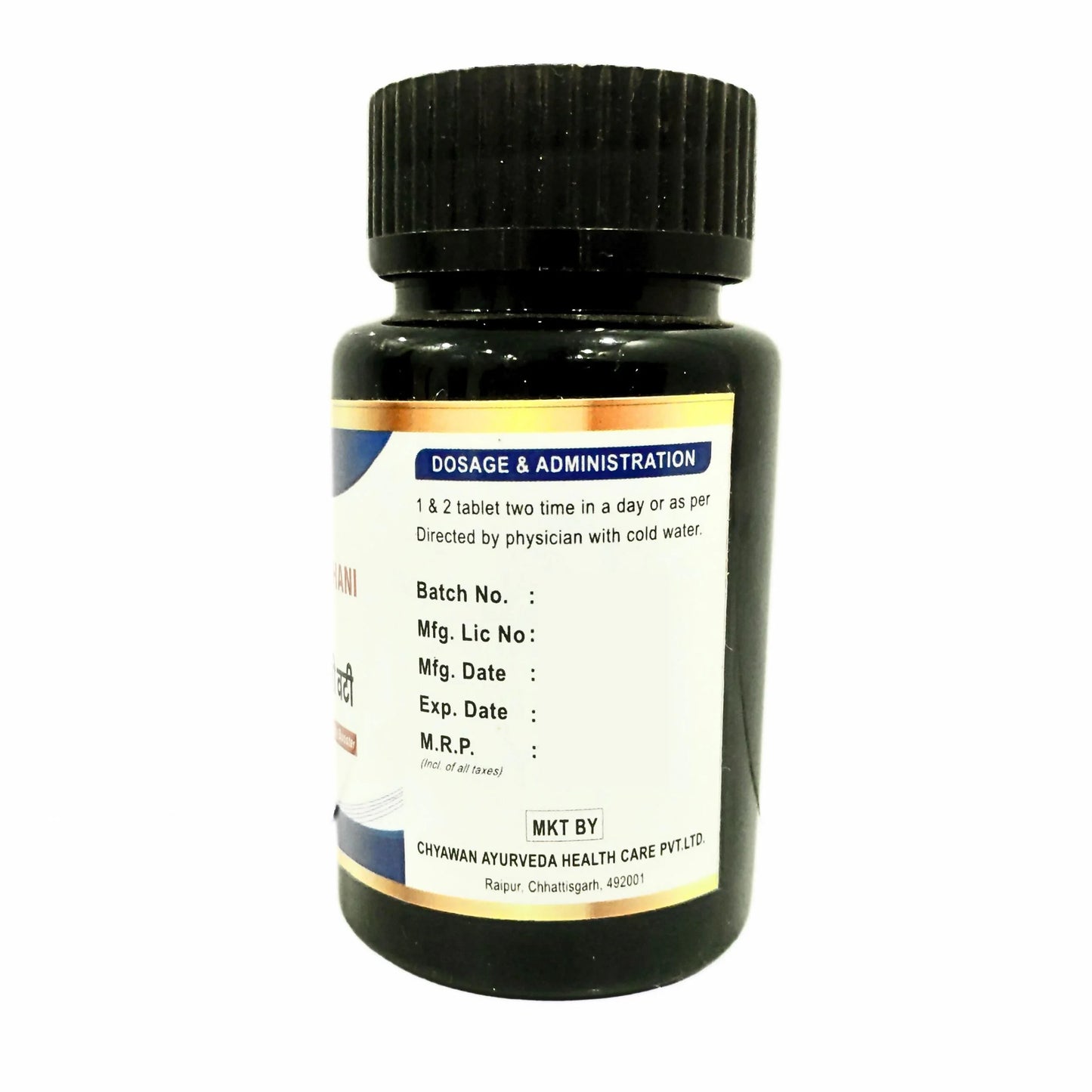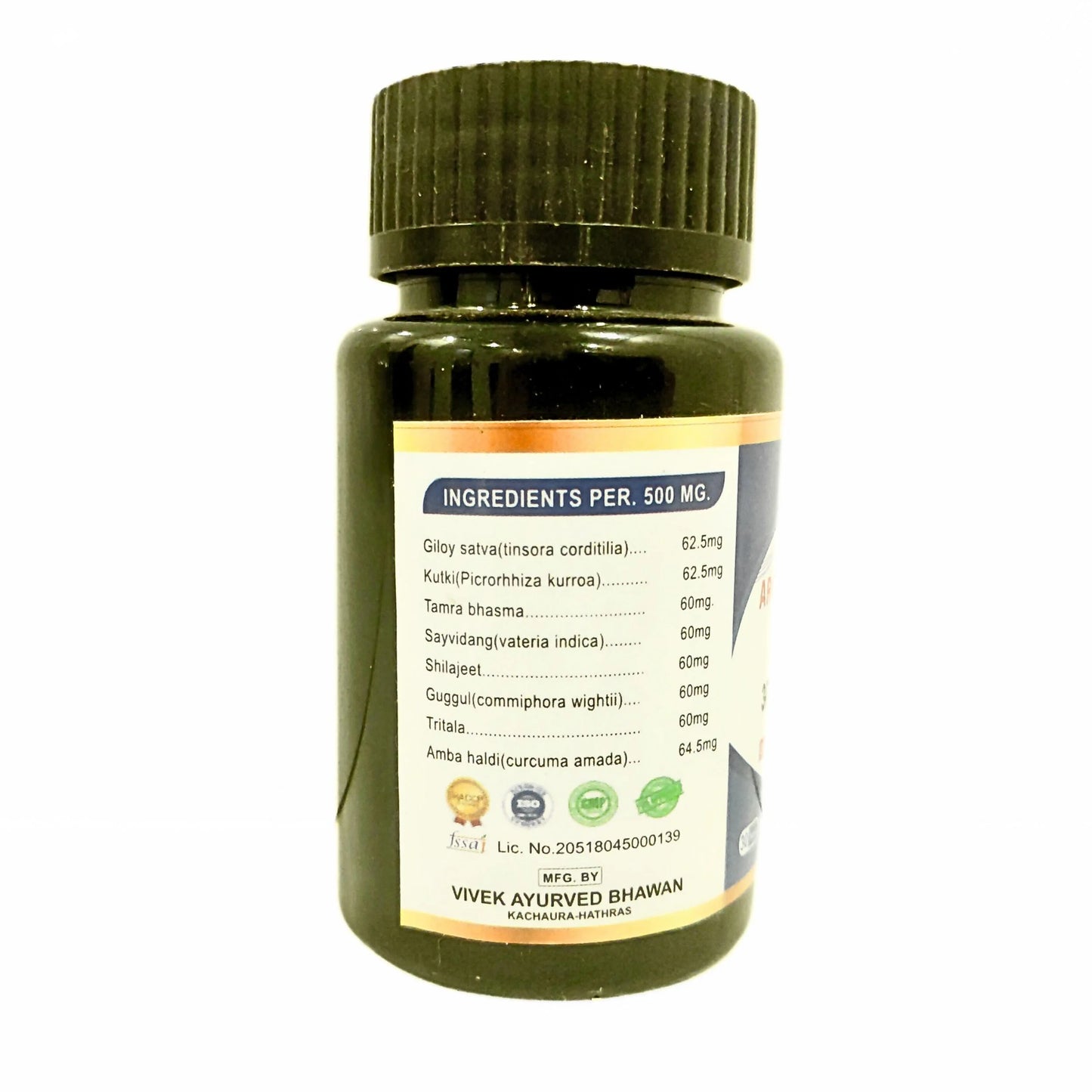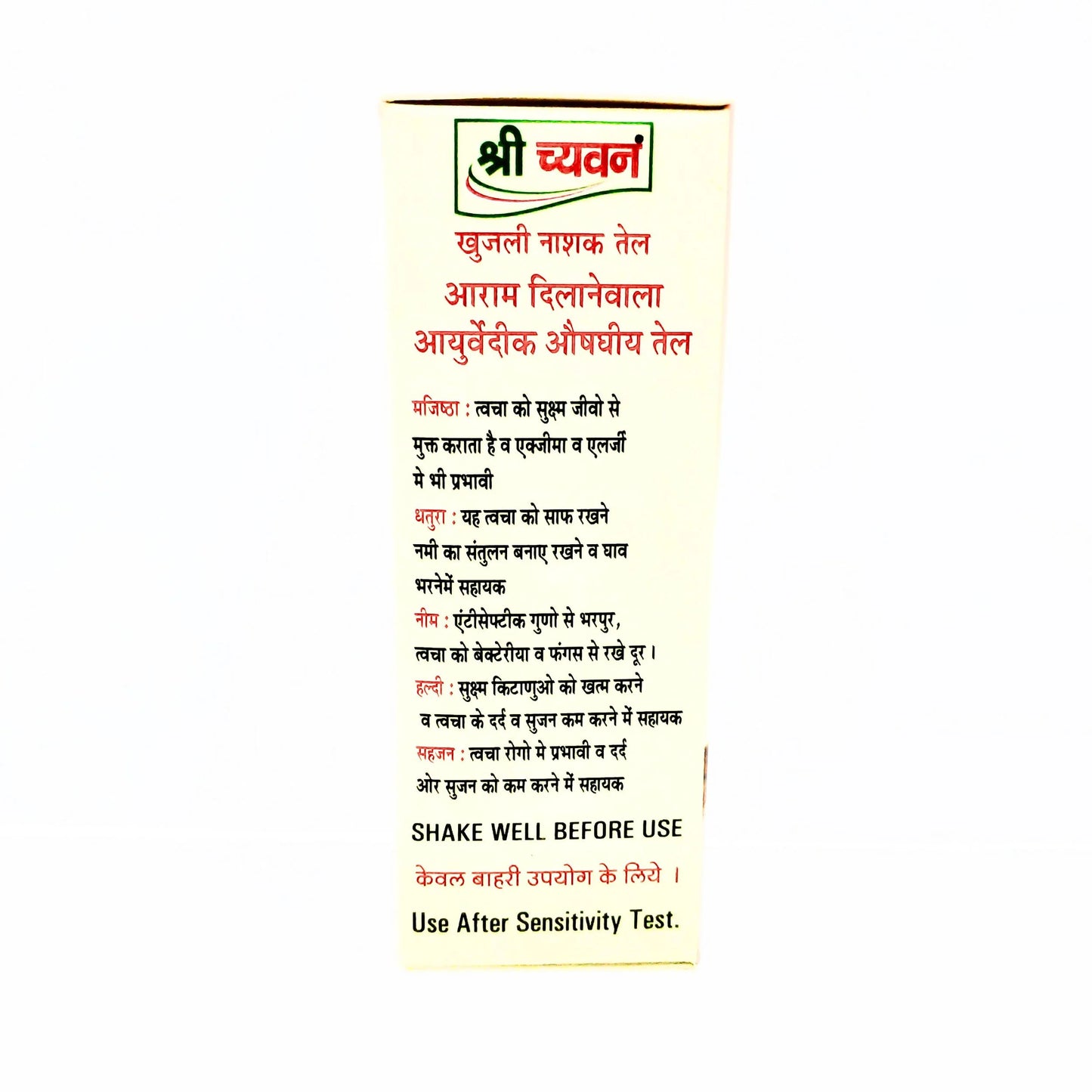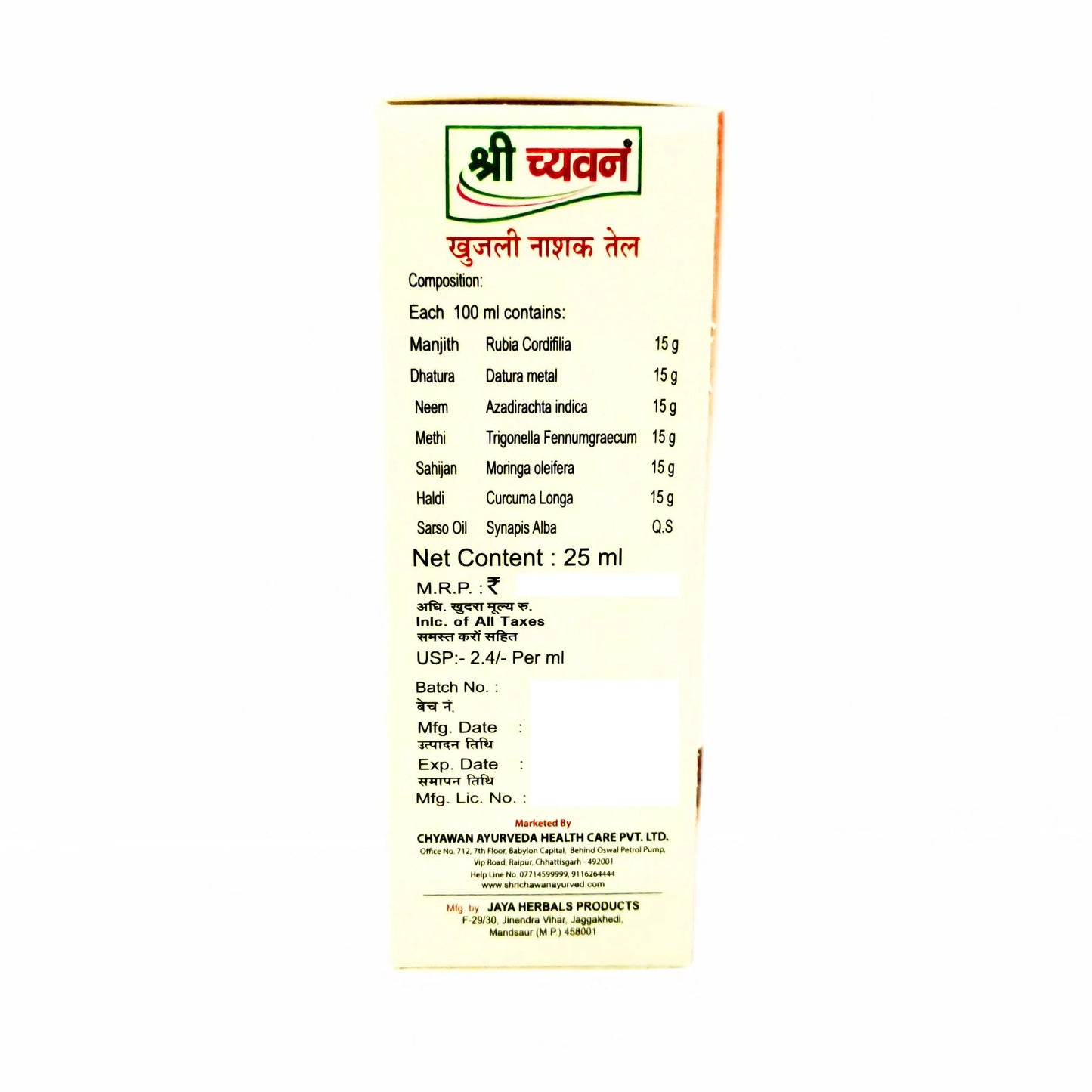Do you ever find yourself battling relentless itchiness or struggling with pesky skin conditions? If so, you're not alone. Millions of people worldwide deal with various skin issues, that impact their self-esteem and overall well-being. Today, we delve into the ancient wisdom of Ayurveda, exploring its unique perspective on itching and skin disorders, and its effective approaches to bring relief.
Ayurveda and the Itch: A Deeper Look
In Ayurveda, itching is referred to as "Kandu" or "Sheetapitta," and it is considered a common symptom of various skin-related disorders. Ayurveda views itching as a manifestation of an imbalance in the body's doshas (biological energies) and attributes it primarily to the aggravation of the "Pitta" dosha, which is responsible for digestion, metabolism, and heat regulation.
Causes:
- Excessive Heat (Pitta Dosha): An increase in Pitta dosha can lead to inflammation and heat-related skin conditions, causing itching. Consuming spicy, hot, or acidic foods, exposure to the sun and emotional stress can all exacerbate Pitta dosha.
- Toxins (Ama): The accumulation of toxins in the body can manifest as skin issues, including itching. Ama is the result of poor digestion and the incomplete elimination of waste products.
- Improper Diet and Lifestyle: Unhealthy dietary choices, irregular eating patterns, and an unhealthy lifestyle can disturb the balance of doshas and contribute to itching.
- Allergies and Sensitivities: Ayurveda recognizes that certain foods, environmental factors, or allergens can trigger skin reactions and itching in individuals with heightened sensitivities.
- Microbial Infections: Infections caused by fungi, bacteria, or parasites can also lead to itching, and Ayurveda considers them a potential cause.
- Blood Impurities: Poor blood circulation and impurities in the blood can result in skin disorders and itching.
Pitta & Skin Diseases:
In Ayurveda, the Pitta dosha plays a significant role in the development of various skin diseases and disorders. Pitta is one of the three doshas, or biological energies, that govern various physiological and psychological functions in the body. It is associated with the elements of fire and water and is responsible for metabolism, digestion, and transformation. When Pitta becomes imbalanced, it can lead to various skin-related issues. Here's the relationship between Pitta and skin diseases:
- Pitta Imbalance and Skin: When Pitta dosha is aggravated or out of balance, it tends to accumulate in the skin tissues. This excess Pitta can manifest as various skin problems due to its fiery and inflammatory nature.
- Inflammation and Heat: Pitta imbalance often leads to increased heat and inflammation in the body. This excess heat can cause redness, itching, burning sensations, and sensitivity in the skin.
- Acne and Pimples: Conditions like acne and pimples are often attributed to Pitta imbalance. Excessive Pitta can lead to the overproduction of sebum (skin oil) and clog pores, resulting in breakouts.
- Eczema (Atopic Dermatitis): Eczema is characterized by itchy and inflamed skin, and it is often linked to Pitta imbalance. The inflammation and heat generated by aggravated Pitta can exacerbate eczema symptoms.
- Psoriasis: Psoriasis is another skin condition that Ayurveda associates with Pitta imbalance. It presents as red, scaly patches on the skin, which are believed to be caused by an overactive immune response and increased Pitta.
- Urticaria (Hives): Urticaria, characterized by raised, itchy welts on the skin, can also be triggered or worsened by Pitta aggravation, particularly in response to allergies or stress.
- Rosacea: Rosacea is a condition marked by facial redness, flushing, and visible blood vessels. Pitta-related factors such as heat and inflammation are thought to contribute to its development.
Eczema & Psoriasis:
Eczema (Atopic Dermatitis) and Psoriasis are two common chronic skin conditions that Ayurveda recognizes and offers holistic approaches to managing and alleviating their symptoms. While Ayurveda considers these conditions in the context of individual body types (Prakriti) and imbalances (Vikriti), it generally aims to balance the doshas, particularly Pitta and Kapha, to address the underlying causes of these skin disorders. Here's how Ayurveda views and approaches eczema and psoriasis:
- Eczema (Atopic Dermatitis):
- Imbalance: Eczema is often associated with an imbalance in both Vata and Kapha doshas, with Pitta playing a secondary role. Imbalances can result from factors such as dietary choices, stress, allergens, and environmental triggers.
- Symptoms: Eczema typically presents with itchy, inflamed, and dry skin, along with redness and sometimes oozing or crusting lesions. Ayurveda emphasizes the importance of addressing the underlying inflammation and soothing the skin.
- Psoriasis:
- Imbalance: Psoriasis is primarily associated with an aggravated Pitta dosha, although Vata and Kapha imbalances can also contribute. The accumulation of heat and toxins in the body is a common factor in psoriasis.
- Symptoms: Psoriasis is characterized by raised, red, and scaly patches on the skin. The skin may also be itchy and dry. Ayurveda aims to cool down the heat and reduce the inflammation associated with psoriasis.
Ayurvedic perspective to treat itching:
- Balancing Doshas: Treatment aims to pacify the aggravated Pitta dosha. This may involve dietary modifications, avoiding spicy and hot foods, and adopting a cooling diet.
- Detoxification (Panchakarma): Ayurvedic therapies such as Panchakarma can help remove toxins (ama) from the body, which is considered essential for skin health.
- Herbal Remedies: Ayurveda employs various herbs and herbal formulations to soothe the skin, reduce inflammation, and alleviate itching. Some commonly used herbs include neem, turmeric, aloe vera and sandalwood.
- Lifestyle Modifications: Ayurvedic practitioners may recommend lifestyle changes, stress reduction techniques, and practices like yoga and meditation to help manage itching.
- Dietary Guidelines: Dietary recommendations may focus on consuming cooling foods like cucumber, mint, and coriander, while avoiding heating foods and substances.
Seeking Relief: Shri Chyawan Ayurveda's Itch Relief Kit
Shri Chyawan Ayurveda’s have successfully formulated the best ayurvedic medicine for skin itching - an Itch Relief Kit to help you get rid-off of itching, irritation, rashes, redness on the skin, fungal infection, eczema, etc. This kit is made with natural, pure and herbal ingredients which adds on the goodness of Ayurveda to provide you an ultimate relief solution. It’s an ideal ayurvedic medicine for skin rashes and itching. It consists of: Karela-Jamun Ras, Aarogya Vardhani Vati, Panch Tulsi drops, Itching free oil.
Product Ingredients:
-
Karela-Jamun Ras: It is made up of pure Karela and Jamun juice, with no artificial additives.
-
Aarogya Vardhani Vati: It consists of ingredients like Giloy, Kutki, Tamra Bhasma, Vayvidagn, Shilajeet, Guggul, Trifala, and Amba Haldi.
-
Panch Tulsi drops: It basically consists of pure Tulsi extract.
- Itching free oil: It consists of Manjith/Rubia Cordifolia, Dhatura. Neem, Methi, Sahjan, Haldi and Sarso oil.
Product Benefits:
- Provides relief from constant itchiness and soothes the affected area.
- Provides relief from fungal skin infections like ringworm, eczema, etc.
- Effectively gives relief to skin rashes, redness on sensitive skin and soothes the skin and affected area.
- Pure, Natural, Safe and ayurvedic products are suitable to all skin types.
How to use:
Karela-Jamun Ras: Consume15-30ml of Karela-Jamun Ras on an empty stomach, twice a day or as directed by physician. For best results, use Karela-Jamun Ras for 3-6 months.
Aarogya Vardhani Vati: Consume 1 tablet, twice a day, after light breakfast.
Panch Tulsi drops: Add 1-2 drops of Panch Tulsi Drops in cup of tea/coffee/water and consume twice a day.
Itching free oil: Gently apply this oil on the affected area.
Other benefits of using Ayurveda for Skin Diseases:
Ayurveda offers several benefits for addressing and managing skin diseases and disorders. It provides a holistic approach that takes into account the individual's constitution (Prakriti), imbalances (Vikriti), and the root causes of skin issues. Here are some of the benefits of using Ayurveda for skin diseases:
- Personalized Treatment: Ayurveda recognizes that each person is unique, and skin conditions can manifest differently in individuals. Ayurvedic practitioners tailor treatments based on the individual's doshas constitution and the specific imbalance causing the skin disease. This personalized approach increases the chances of success in treating the condition.
- Balancing Doshas: Ayurveda views skin diseases as a result of doshic imbalances, primarily involving Vata, Pitta, and Kapha doshas. Treatment aims to restore the balance of these doshas, addressing the root causes of the skin condition.
- Natural and herbal remedies: Ayurveda utilizes a wide range of herbs, plants, and natural substances to treat skin diseases. These natural remedies are often gentle and have fewer side effects compared to synthetic medications.
- Holistic Healing: Ayurvedic treatments not only focus on alleviating the symptoms of skin diseases but also aim to address the underlying causes. This holistic approach promotes overall health and well-being.
- Stress Reduction: Ayurveda places a strong emphasis on stress reduction techniques like yoga, meditation, and mindfulness. Stress can exacerbate many skin conditions, so managing it is an integral part of Ayurvedic treatment.
- Dietary Modifications: Ayurveda provides dietary guidelines tailored to the individual's doshic constitution and the specific skin condition. Proper nutrition can play a crucial role in skin health and healing.
- Detoxification: Ayurvedic detoxification therapies, such as Panchakarma, help remove toxins (ama) from the body, which are believed to contribute to skin diseases. These therapies can rejuvenate the body and promote skin healing.
- Safe for Long-Term Use: Ayurvedic treatments are often considered safe for long-term use, making them suitable for managing chronic skin conditions. They do not typically rely on suppressing symptoms but instead aim to restore balance to prevent the recurrence of skin issues.
- Preventive Care: Ayurveda advocates a preventive approach to health. By maintaining balance in the doshas and following Ayurvedic lifestyle recommendations, individuals can reduce the risk of developing skin diseases in the first place.
- Minimal Side Effects: Ayurvedic treatments primarily use natural ingredients and therapies, which tend to have minimal side effects when compared to some pharmaceutical medications.
In conclusion it is an effective itching ayurvedic medicine approaches to address itching, various skin diseases and disorders. By focusing on balancing the doshas, using natural remedies, promoting stress reduction, and incorporating dietary and lifestyle modifications, Ayurveda aims to not only alleviate the symptoms of skin conditions but also address their underlying causes. This ancient system of medicine emphasizes the importance of individualized care and prevention, making it a valuable complement to conventional medical treatments for skin health.

